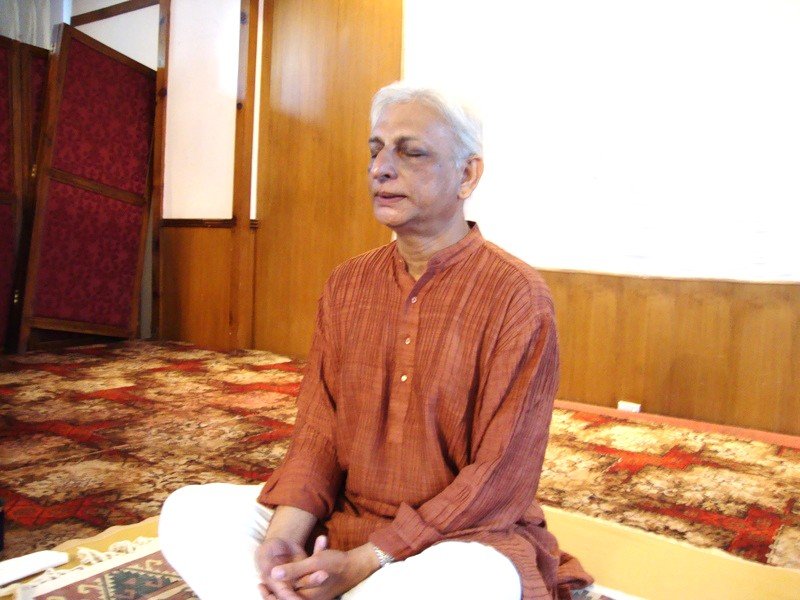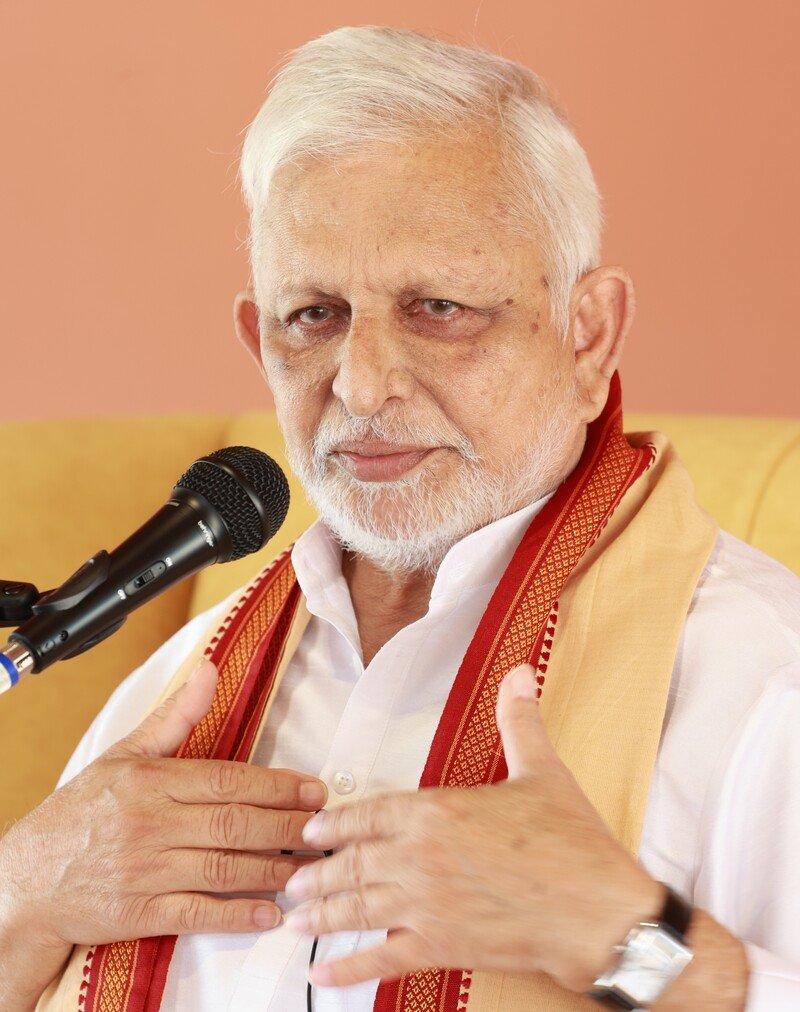
If you can make one room in your house into your own private cave, that’s all you need. In summer, put on the AC; in winter, cover yourself with a blanket. You have your own cave where nobody will spray incense, disturb you, or ask you to join an ashram. You are free. If you find such a place, you can start your practice.
People think of the Supreme Energy in many different ways. Some conceive of God with a form. Others think of the Divine as energy, or śhūnya, or an all-pervading Supreme Reality, Brahman. A Christian may see Christ; a Hindu may think of Devi, Shakti, or Ganesh. There are many ways to look at Divinity.
But you cannot merely say “This is all-pervading, unconditioned, free — and if I think about it, I will reach there.” Not possible. You must find some way, a dharana — a means to fix your attention — that leads to dhyana and finally samadhi. It’s actually dangerous to keep saying “I am Brahman.” The ego becomes strong. Better to say, “I am not this; when everything ends, there is Brahman.” Humility and affection are essential.
So first, set apart some time every day to sit quietly and practice. Everything begins with habit. Later, you can break the habit, but you need something to break! Like a dancer who first learns the classical form before innovating, without form there can be no freedom.
Fix a time and don’t budge from that time. Don’t say, “Oh, this morning I have to take the dog for a walk.” Either change your time for the dog, or change the dog’s time for your meditation! I also have dogs; I take them for a walk, but my meditation time is fixed.
The earlier the better. Early morning is beautiful because nothing has yet started except the birds and they are lovely company. When you meditate and hear them chirping, don’t try to cut them off; they are part of the whole. So yes, early morning is a good time, when the world is still quiet and energies not yet dissipated.
Choose a reasonable time, when the day is emerging from night and a place where there’s little noise or disturbance. Tell your family, “Please, I’m going to meditate for ten minutes; don’t disturb me.”
If you’re serious, keep a set of clothes used only for meditation. Whatever you wear carries traces of what you do in it. If you wear your machine-shop overalls, you’ll feel mechanical inside. Have a clean, comfortable set of clothes, they need not be fashionable. It’s difficult to meditate in tight jeans. Cleanliness is important.
So:
- Get up a little earlier.
- Keep a clean, simple set of clothes
- Have an asana – a mat or rug used only by you. Don’t let anyone else or even the dog sit on it. Roll it up afterward.
Having settled all this, sit down and decide in which form or mood you wish to connect with that inner energy : with form or without form. Once decided, the first thing to do is bow down. Touch your forehead to the ground and be thankful for your life, that you have food, clothes, a place to stay, a family. Give thanks to this Earth for providing everything. You don’t have to use Sanskrit; a simple “Thank you” is fine. God understands every language.
After bowing, straighten up and sit comfortably. Traditionally, the cross-legged posture is recommended; it helps balance the prana and apana currents flowing through the ida, pingala, and sushumna nadis. Sit erect but relaxed, alert not tense. If you can’t sit cross-legged, sit on a chair, perhaps with one foot raised, like Dakshinamurti.
Before starting, it helps to gently tense and relax the body. If you don’t tense, you can’t relax. A simple way: sitting cross-legged, bend forward, touch your forehead to the floor while holding your knees, hold for a few seconds, and straighten up again. Do this three or four times, it stretches the system and makes you relaxed when you finally sit upright.
Now begins meditation proper – a very simple method that anyone can practice, regardless of religion. It is to give complete attention to your breathing. Everyone breathes; breath is the common factor. The Gita says, prana apana samayukta – the joining of the upward and downward breaths in balance.
So sit comfortably. Take a deep yogic breath, not shallow or jerky. In yogic language, this is ujjayi breath, drawn gently through the throat rather than the nostrils alone. Suppose you open your mouth and exhale “haaa” , now close your mouth and do the same internally. You’ll feel the air touch your throat centers.
When you inhale, mentally chant the sound Hum. When you exhale, visualize or mentally chant Sa. Thus the breath becomes Hum… Sa. Take a deep breath in, Hum, hold for half a minute, and breathe out slowly, Sa. Don’t count mechanically; simply continue for ten minutes. The mind will soon calm down, drawn inward by the sound and rhythm.
At the end of ten minutes, when the mind is quiet, you may proceed in two ways.
If you relate to the Divine in a form, visualize that form in your heart, perhaps a white or black Linga for Shiva, or whatever you love and chant a mantra such as Om Namah Shivaya.
If you prefer the formless, simply relax and watch your mind while chanting the sound of Om.
To chant Om deeply, close your ears with your thumbs, cutting off external noise and emphasize the last sound, Ma. Let the vibration fill your head: OMmmm… Then inhale again and repeat. While doing this, fix your attention gently at the center of your forehead. If you like, tap lightly there, “Knock and it shall be opened unto thee.” Let the vibration of Ma resonate inside your head. Continue this Bhramari (the humming-bee sound) for about five minutes.
So you have done ten minutes of Hamsa (Hum-Sa breathing) and five minutes of Bhramari (vibrating Om). Now drop everything. No Hamsa, no Om, no Bhramari, just sit still. Sit with the understanding that when everything is silent, the essence of your consciousness alone remains – your true identity.
If you hear rain or birds, don’t try to block them. They are not separate; all is one. We have learned to carve out our little boxes of time and space, but in truth, existence is limitless. So just sit quietly, enjoying the stillness within. Sit as long as you want. You will find that the quiet itself is joy.
When you finish, bow down again. Touch your forehead to the ground and say thank you.
We say Sri Gurubhyo Namaha – salutation to the Supreme Guru, to God Himself.
Then chant Om Shanti Shanti Shanti – peace.
This simple practice takes only fifteen minutes a day. It’s not a tall order if you really wish to do it. Ideally, do it before the day begins. If not possible, do it at night before sleep, after an early dinner. Don’t meditate on a full stomach; wait at least an hour or more after a meal. And if you’ve had a little alcohol, skip that evening and practice next morning when you’re clear.
This is meditation – simple, direct, and practical.

